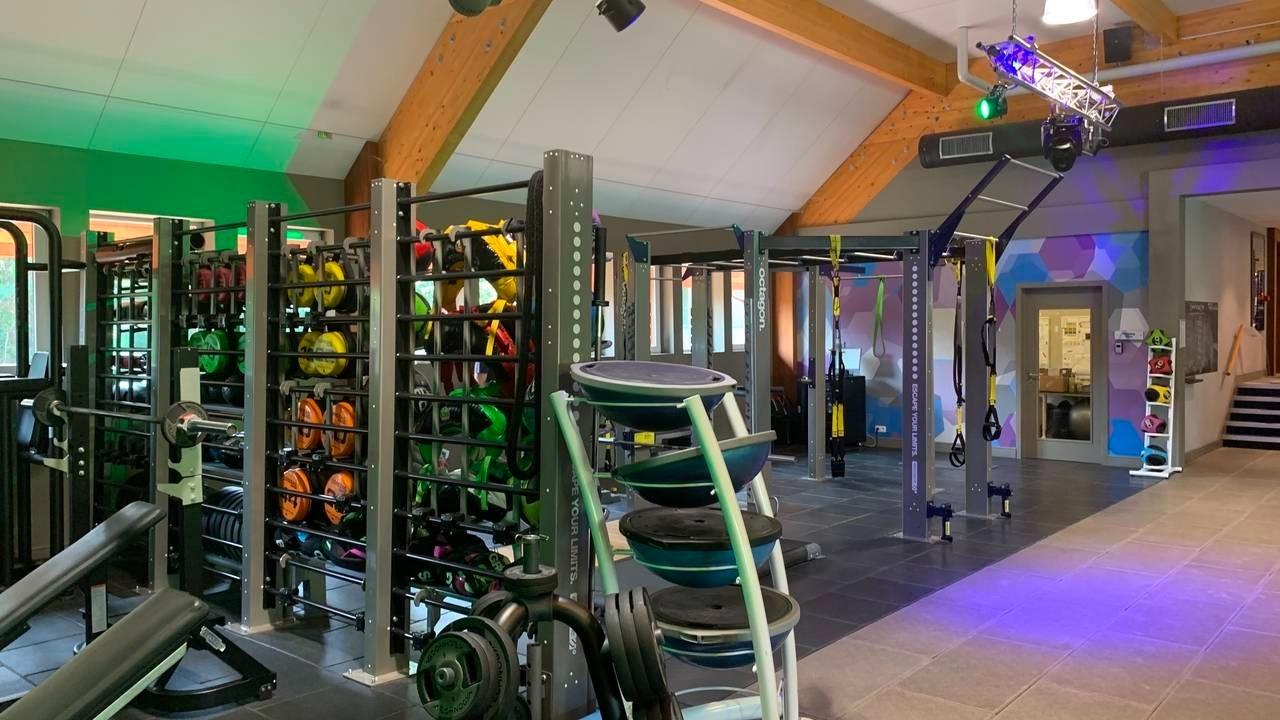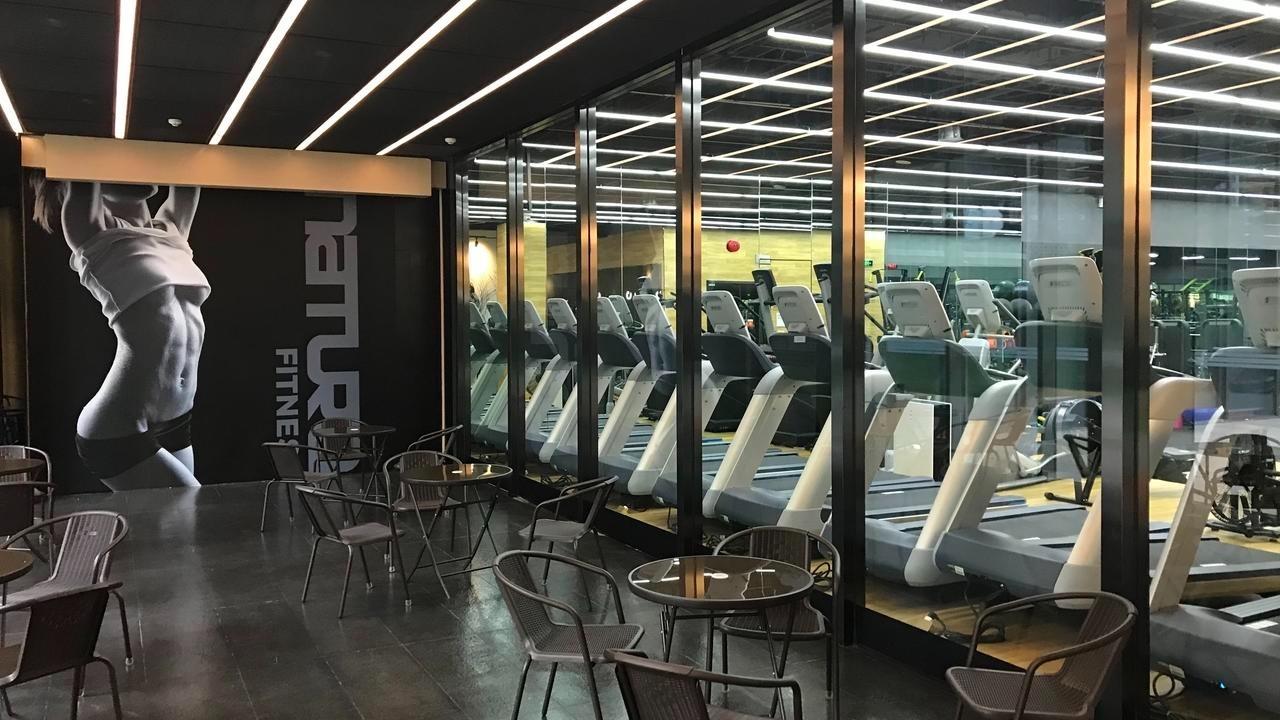Managing member behaviour as you transition back into gym life
What’s the best way to build confidence amongst members when it comes to reopening the doors of your club? How can you communicate rules relating to Covid-19 and ensure they are followed by all?
There's an increasing amount of speculation and information about the process of reopening gyms, but very little so far to do with training staff on how to cope and deal with reopening when it comes to the actual member experience.
Visual prompts to guide members
One of the things to be aware of, is that we often take our cues from visual prompts. When we see a red traffic light, we know it’s a signal to stop, but the traffic light doesn't actually stop us. It's just a signal.
When it comes to reopening gyms, we can use visual prompts to help our customers behave the way we need them to behave at this time.
Visual prompts need to be both before, during, and after their visit. Adam Zeittsiff's team at Gold's in the US are preparing to open some of their clubs and have created signage out...
FIT-C Podcast Corona Virus Edition
FIT-C Podcast Ep. 094 Garrett Marshall, Paul Bedford, & Mike Leveque: Dealing With The Coronavirus
This week, on the Fitness + Technology podcast, host Bryan O'Rourke welcomes special guests from across the industry in wake of the coronavirus pandemic. As leading thinkers and experts in fitness and club operations, listeners will hear their foresight into the future and how you can stay prepared in this time of uncertainty. The upcoming podcasts will be a series of interviews we hope will be of value to you as this situation unfolds. If there is anything we can do for you, please reach out @bryankorourke or at [email protected].
Please know, we will get through this. We send our prayers and best wishes to you and your families.
One Powerful Quote:
8:47: “We did make a...
Escape Your Limit Podcast - What's the difference between retention and attrition?
Retention is the period of time between when someone joins and they either stop exercising or when they stopped paying. Depending upon the markets we work in, it depends which one of those two or if we measure both.
Attrition is the number of people that cancel from your business. So one is measured in months and the other is measured in people, so they're not the opposite of one another, Like many people think. They're related, but then they are separate measures completely.
Lots of people say, oh well if your retention is this, then your attrition is the opposite.
We use traditional statistical analysis that's found in medicine insurance companies to actually track and plot what people are doing. Some of the things that the Fitness industry use to measure attrition just have no value. You might as well measure the size of a room with an ice cream.
Retention needs to be measured in people, not percentages.
The approach that's most appropriate, is called survival analysis. Survival an...
CoachAi product review
Each week I get contacted by suppliers who have developed products that claim to improve retention. Some are existing companies and others are start ups. So I have decided to review them and publish those reviews. This is the first is with Shai from CoachAi. I discus the product, how clients are using CoachAi and the result they are getting. I summarise and give my evaluation a the end.
You can also download the one year case study hear. https://www.coachai.com/pub/coachai-one-year-case-study-2019.pdf
Keep your customers using these three phases.
Considering the current situation globally I decided to make a short video for my clients to help them understand what they need to do to retain customers at this time. It ended up being a little long than I had planned (14 mins), but in it I describe the three phases of change that need to be managed.
These are the phases you need to manage as a health club operator
- Reduce Exercise Phase
- Isolation Phase
- Returning Phase.
As this week progresses I am sure I will have more ideas about what operators can do and will update within our lunchtime lesson posts on LinkedIn, Facebook, Twitter and Instagram.
If you have any questions email me at [email protected]
Please share the video
If you are not comfortable sending people to this website to watch the video you can download the video from Vimeo and embed it somewhere you feel more comfortable.
Paul Bedford PhD
Retention Guru Ltd
+44 (0) 7956 311 899
Staff who help retain members:

No staff who sit on treadmills while clients workout are NOT what I am looking for in staff. Our research has shown that staff to member interaction has been hugely effective at increasing member retention. One of the characteristics of clubs who retain their members for longest, is the staff they hire.
The most effective clubs hire employees with specific traits and characteristics that will enhance the business. Hiring the ideal member of staff is not just about who is the most knowledgeable because information, technique, and systems can be taught. Recognising the best qualities of an ideal candidate is important in order to determine who will work best with other members of staff, who is most apt, and who will also become a strong asset. Assuming that our fitness staff have an appropriate qualification to do their job the following 10 items become the essential criteria for recurring staff that can assist in the development of a member and increase retention.
Here are 10 characte...
Learning from Gamers - Why Big Box Clubs will still be around for years to come.

In gaming infinite variability are games that no matter how long you play them for you never repeat the same experience. The highly successful and very addictive Fortnite is just such an example. Many games have finite variability where players can become very accustomed to the landscape and challenges placed in their way. Some of this is by design, so that game producers are able to release further additions of popular titles or new versions every year.
The more niche you are the more finite your variability. The challenges that may be faced by boutiques and single activity studios over the long term is the concept of finite variability, a posh way of saying nothing new. Which can only combated by larger population density and frequent turnover of inhabitants.
Now no business can ensure that its customers will use its products or services forever, however the more limited the options or choices the quicker someone reaches the point where the experience just becomes repetitive. W...
Digital Intervention for Retention not sales Pt 4.

In the final part of our series on customer retention, Digital intervention for retention not sales we explain how to use CRM systems as a digital intervention for retention…
Most CRM and marketing systems are all aiming to resell. Think about your Facebook feed, if you click on an ad you’re then haunted for the next three months by the fact you searched for a new greenhouse for your Grandfather! But it doesn’t have to be like that. You can use the same technology when someone has joined your club to send reassuring, supportive messages.
So, when a new person signs up from your joining page, send them a thank you note and use a retargeting pixel to interact with them via pop up messages during their first three months of membership, such as ‘How are you finding the club?’, ‘We're glad you're part of our community’, ‘Here's a testimonial from someone who's achieved similar things to you’. You can simply take all the strategies used to attract new people and repurpose them to reinfo...
Visits and how they affect Retention Pt 3.

Ultimately, if you want to stay in business, people must use your facility, and, as I've mentioned previously, you want members to visit a minimum of once per week or four times per month and upwards.
My Retention VIP project focusses on just three areas: visits, interactions and programming. In conversation, the staff’s responsibility is simply to drive visits, because if they don't attend, it doesn't matter how well-educated your staff are or how beautiful your club is, it's irrelevant.
So a lot the of work I do with staff is based around about asking customers when they are in next. When they are next training, and when they were in last - trying to get them into a routine. People who follow exercise on a routine behaviour, for instance, same day / same time, adhere to their exercise programme, what we prescribe for them, much more strongly. Plus they retain their memberships much, much longer.
Vice versa, people who train on an ad hoc basis drop in and out much more quickly. S...
How to build your Customer Journey to Improve your Retention Pt 2.

In this second of our four part series on customer retention, we explains the importance of the customer journey…
We use segmented data in our marketing to attract new customers by age, gender and sometimes by sociodemographic group. But once they've joined, we need to start segmenting them based on their behaviours. How frequently are they visiting? What activities are they doing? What are their preferences? What feedback are we getting in terms of their net promoter score?
Visit frequency is a key behaviour, because if visit frequency is low, there's a tendency for that person to drop out.People are much more likely to stay customers if they visit a minimum of four times per month in the first month.
My preference is to describe visit frequency per month, because so much fluctuates weekly. Sometimes people can't visit three times in one week, but they might make up a session the following week. So give your members a range rather than an absolute number, and encourage them to...


